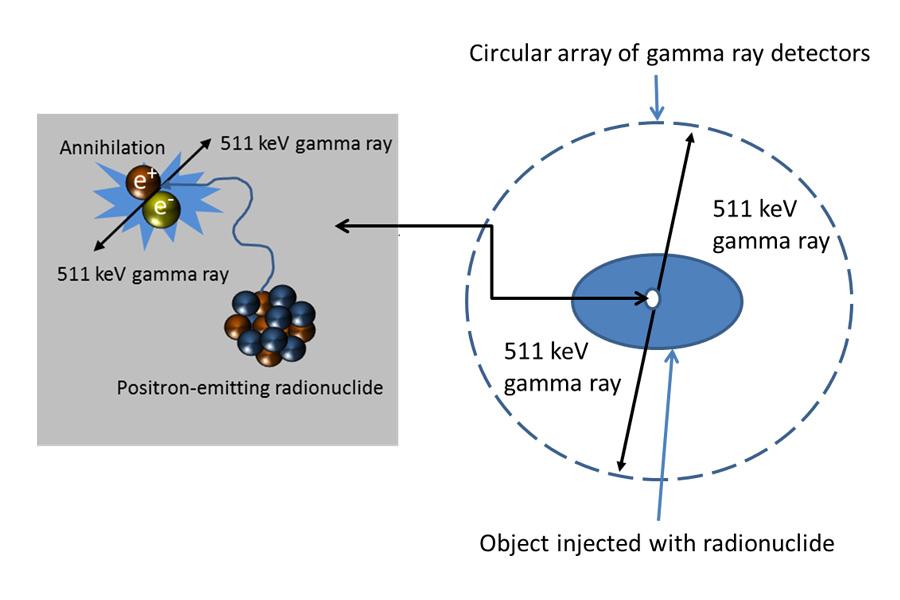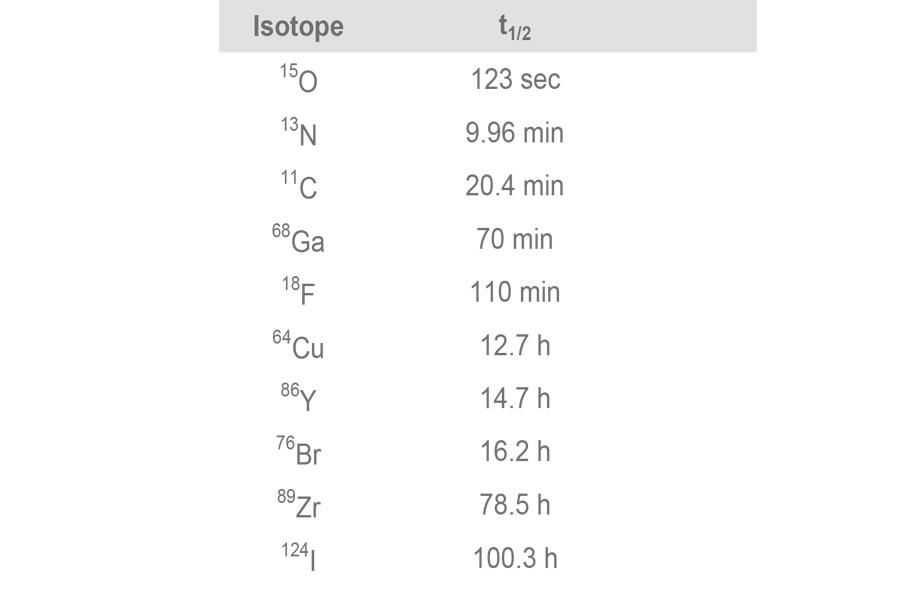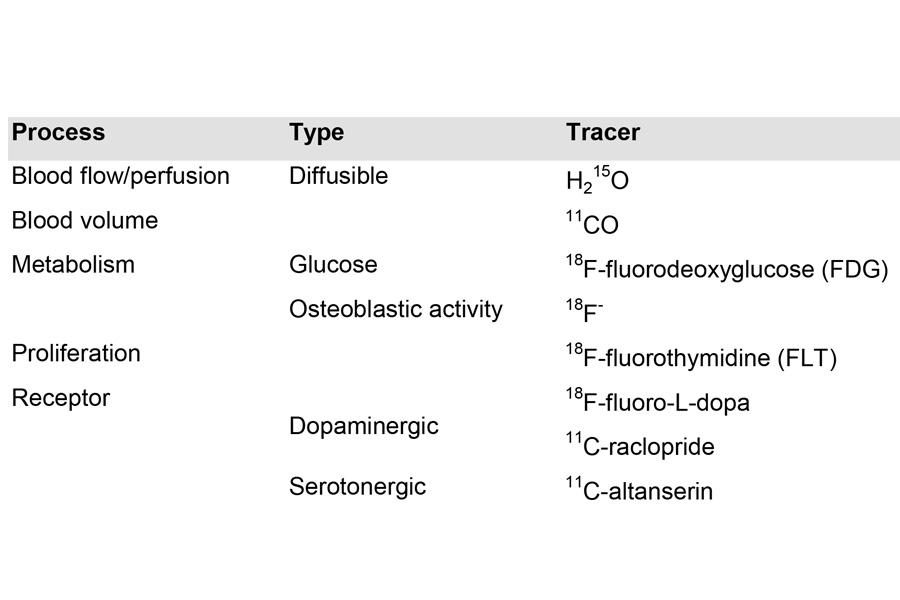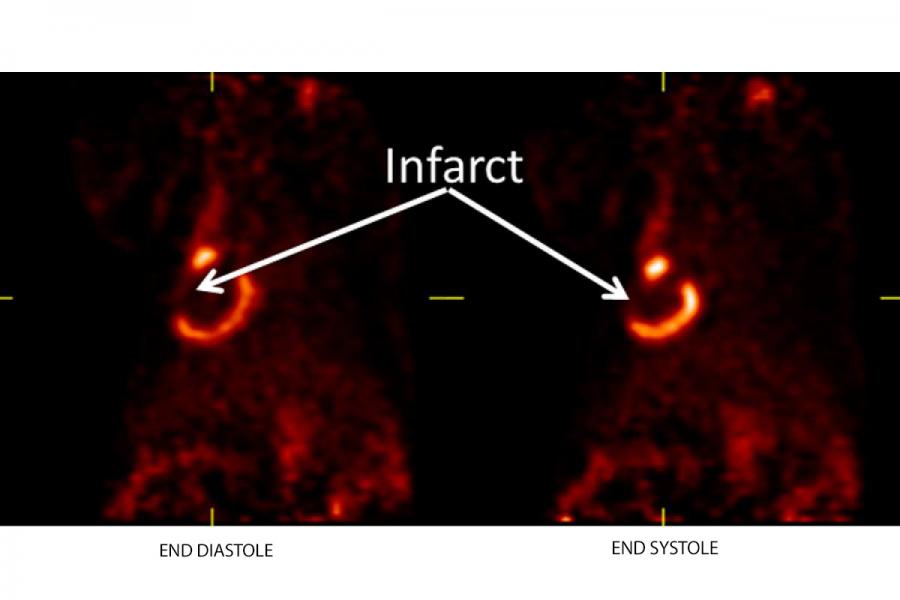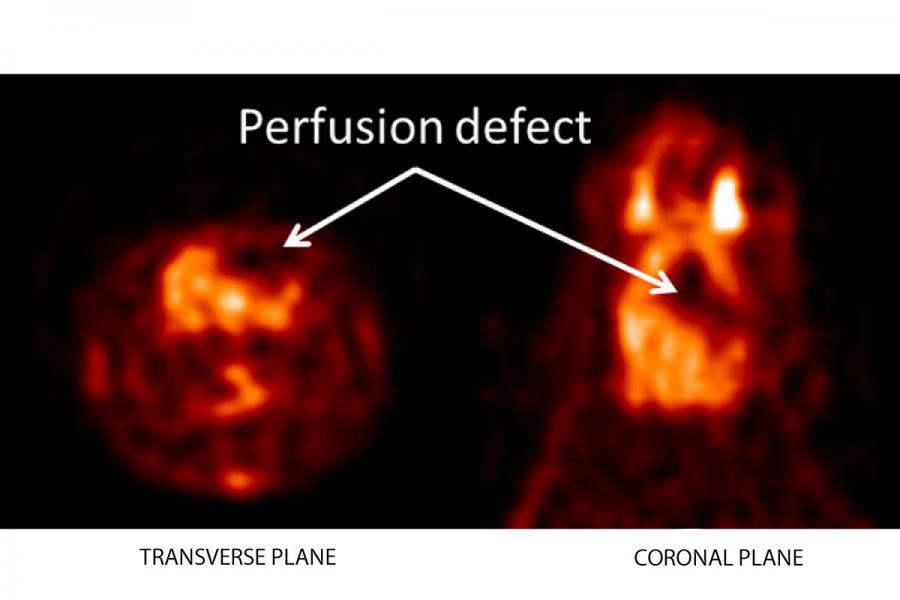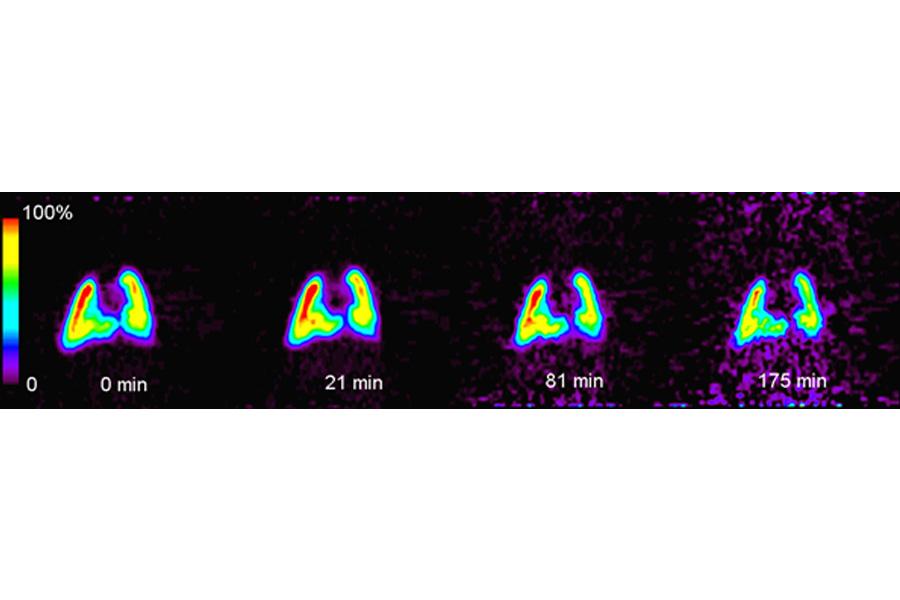Overview
Examples
Instrumentation
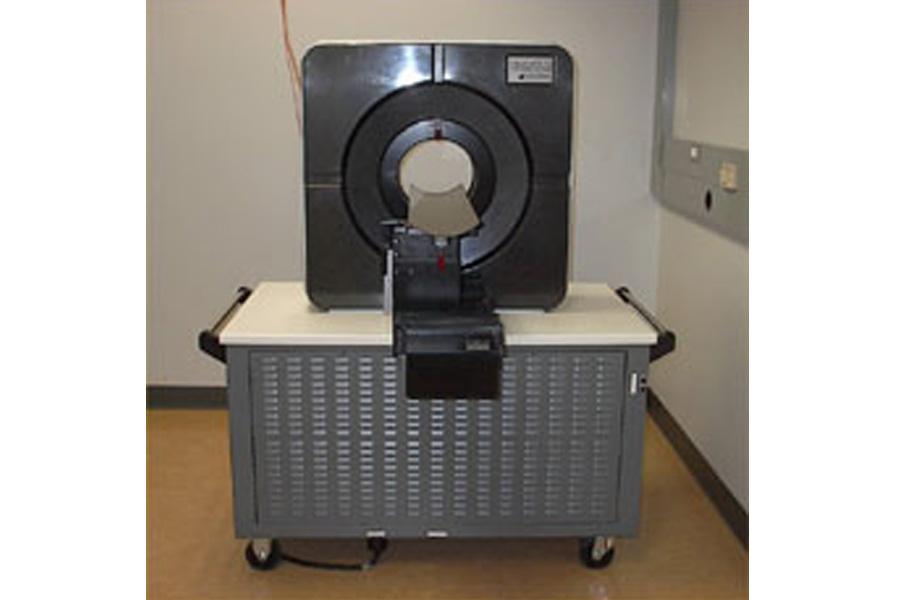
Siemens Preclinical Solutions PET imaging system
PET images are acquired on a Siemens Preclinical Solutions PET imaging system equipped with 168 detector modules arranged as four rings of 42 modules.
Additional information
Fluorescence and bioluminescence images are acquired using a high sensitivity, back thinned, back illuminated CCD camera cooled to -90 degrees Celcius.
Spectral region selected is enabled by 10 narrow band excitation (430, 465, 500, 535, 570, 606, 640, 675, 710 and 745 nm, 30 nm bandpass) and 18 narrow band emission (500, 520, 540, 560, 580, 600, 620, 640, 660, 680, 700, 720, 740, 760, 780, 800, 820 and 840 nm, 20 nm bandpass) filters, optimized to allow data acquisition from the blue to near infrared wavelength regions (430 nm to 850 nm).
For fluorescence imaging, the IVIS Spectrum allows investigators to use either trans-illumination (from the bottom) or epi-illumination (from the top) to illuminate experimental animals. Using a combination of a structured light source and trans-illumination investigators can perform 3D diffuse fluorescence tomography to determine source localization and concentration.
Four fields of view, (22.5 cm, 12.5 cm, 6.5 cm, and 3.9 cm) are selectable, allowing studies of up to 5 mice simultaneously or a single sample with high spatial resolution (up to 20 um).
Applications
Applications include:
- Non-invasive imaging of animal models of human disease
- Non-invasive imaging of genetically engineered animals
- Assess efficacy, pharmacokinetics and biodistribution of novel pharmacological agents
- Assess novel drug delivery and gene therapy approaches
- Develop new radiotracers for diagnostic imaging
Contact us
Central Animal Core Imaging and Transgenic Facilities
23 Basic Medical Sciences Building
745 Bannatyne Avenue
University of Manitoba
Winnipeg, MB R3E 0J9 Canada
Transgenic services: transgenicservice@umanitoba.ca
Imaging services: SAMICF@umanitoba.ca

